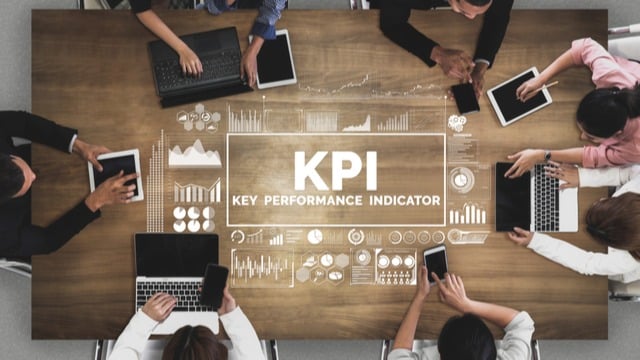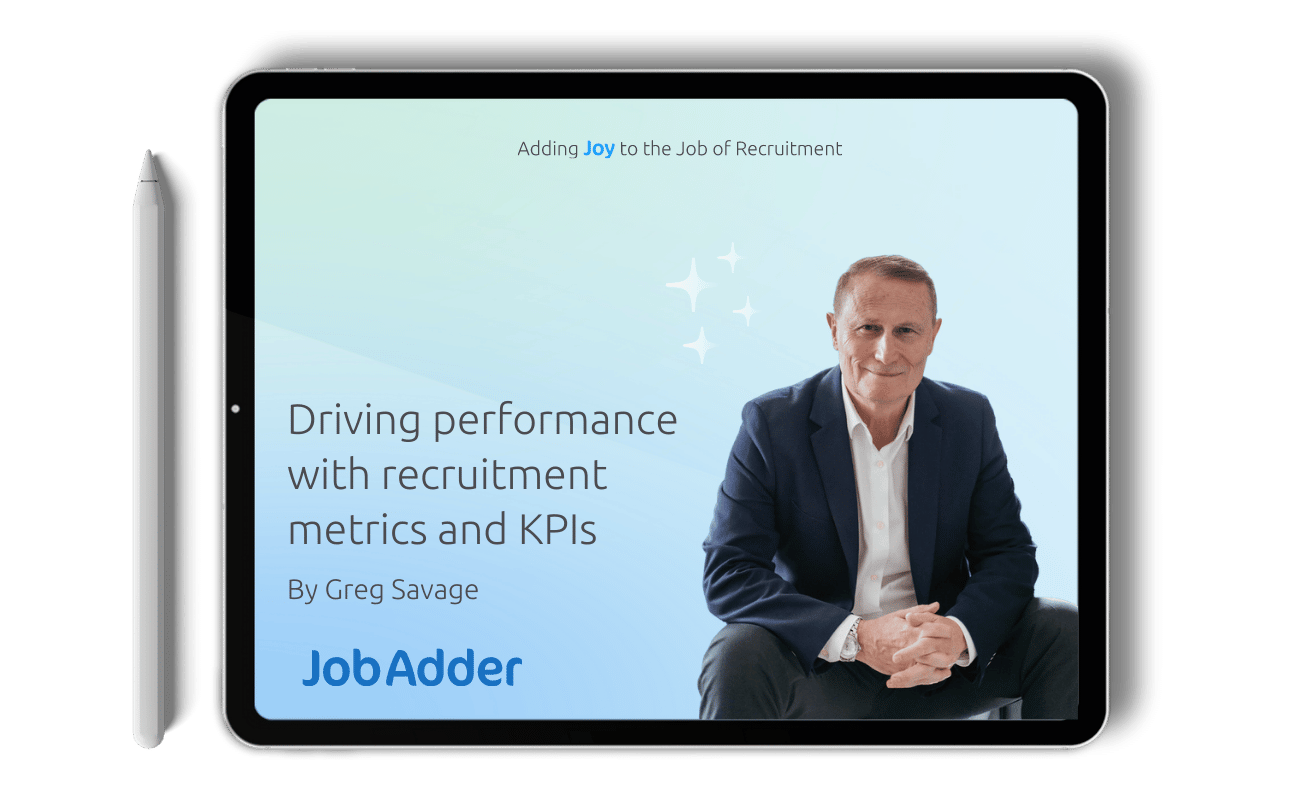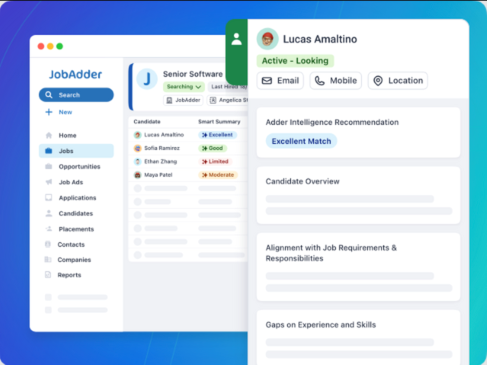Recruitment Blog
Accelerate growth in 2023 with the right recruiter KPIs

How are you maximising the growth you’re already seeing in your recruitment agency or talent team? Are you tracking the right recruiter KPIs?
Understanding and measuring the right KPIs can have an immense impact on the efficiency and success of your recruitment or talent acquisition team.
Here’s how you can approach KPIs in a way that effectively measures the right strategic goals to improve your recruiting process and hiring success.
ACCESS OUR FREE EBOOK NOW: Driving performance with recruitment metrics and KPIs
What are recruiting KPIs?
Key performance indicators, otherwise known as KPIs, are metrics that recruiters can use to measure the performance of their recruitment activities.
KPIs are a form of recruitment and hiring metrics that can measure data across the recruitment funnel, from candidate sourcing and interviewing to offer acceptance rate and candidate satisfaction.
So why are KPIs for recruiters essential and how can recruiters and their leaders make the most of these metrics?
KPIs can reveal crucial insights about your recruitment agency’s or talent team’s recruitment funnel and sourcing process, identifying areas of improvements, highlighting wins and aiding in important forecasting and decision making.
Your agency’s recruiting success can be supported by setting clear benchmarks or KPIs, working out the hiring goals that form this approach and determining the right recruitment strategy.
What are the different types of recruiting KPIs?
There are a range of different types of recruitment metrics and KPIs that can reveal valuable information about your hiring efficiency, candidate engagement and recruitment success.
To determine the important recruiting KPIs that will have the most impact for your agency, explore the array of recruitment metrics below.
These recruitment metrics were provided by JobAdder’s trusted advisor and well-known recruitment thought leader, Greg Savage, who discussed metrics and KPIs for high-performance recruitment in more detail in this eBook.
- Gross profit (GP)/staff member: Work out your agency’s gross profit and then divide that by the number of full-time people you employ. This is a very telling monthly productivity metric.
- GP/income producer: This is similar to the metric above but you only divide by the number of staff who are income producers (those involved in generating sales).
- GP multiple/income producer remuneration: In this KPI, you divide your total GP by the total of your income producers’ salaries.
- Temp and contract GP/total GP: According to Greg, your recruitment agency should have at least 50% of its GP from temporary operations. But he stresses that this shouldn’t mean a decrease in permanent recruitment GP. He recommends a 70/30 split with both areas growing.
- Total expenditure per staff member: This telling metric should be trending downwards or staying stable, as expenses eat into profit.
- Back of house (support and corporate cost)/GP: This covers everyone not involved in sales, like accounts, IT, marketing, etc. To assess, you should divide their salary costs by the total GP.
Other recruitment metrics that many talent acquisition professionals and recruiters alike find useful include:
- Time to hire
- Quality of hire
- Cost per hire
- Interviews to hire
- Submit to interview
- First year turnover rate
- Offer acceptance rate
- Source quality
- Hiring manager satisfaction
- Candidate satisfaction
- New employee retention rate
Where can recruiting KPIs improve your processes?
This wide range of recruiting KPIs and metrics are a guide only, your recruitment agency or talent acquisition team can work out what metrics make the most sense to measure.
By exploring these recruitment metrics and determining which ones you should measure, recruitment and talent acquisition teams can identify how they want to use recruiting KPIs, what they want to learn from them and how they can help them improve their processes.
If we look more closely at KPIs for talent acquisition teams, we can see numerous benefits to in-house teams when utilising these metrics.
Refreshing your talent acquisition strategy
The right KPIs can often point to where your company’s talent acquisition strategy is coming up short.
KPIs can tell you where you get the best candidates. For example, KPIs can tell you that you get more qualified candidates from social media like LinkedIn, rather than job boards, so you can put more resources into prospecting candidates on LinkedIn.
Moreover, a KPI like quality candidates per job opening can help you understand the number of qualified candidates/unqualified candidates that apply for each open position.
If too many under-qualified candidates are applying, that might mean you need to diversify your sourcing strategy or revise the job description.
Simplifying your application and interview processes
KPIs can measure things like application completion rate, which can let you know whether or not your application is too long or intense, if you’re seeing a high drop-off rate throughout the application process.
Moreover, KPIs like time to hire can offer insights into how long it takes to shortlist, interview and extend an offer to prospective employees.
This can reveal bottlenecks in your process and help you improve hiring efficiency, giving your team a much-needed advantage in a tight talent market.
Measuring onboarding success
KPIs like candidate satisfaction and hiring manager satisfaction can indicate how well-matched the new hire is for your company.
If there’s a pattern of low satisfaction, this could indicate that interviews need to be more robust or sourcing techniques should be revised.
It’s also a good idea to track new hire retention rates and turnover as KPIs, which will demonstrate how successful a placement was and how long they lasted in the position.
How do you choose which KPIs to track?
A great KPI is like a compass, pointing you in the direction you need to go and helping you maintain course even if you get turned around on the way.
If you know what your business goals or strategic directions are going to be for the next year, working out KPIs is really about looking at the actions you need to take, and the tracking you should have in place so you can achieve them.
The KPIs themselves are not your goals, they’re the vehicle you use to hit the goals. A couple of characteristics of a great KPI are:
- The KPI is ‘SMART’. By this, I mean that it’s specific, measurable, achievable or attainable, relevant and time-based. The SMART system is often applied to strategic goals, but it’s just as appropriate for individual KPIs.
- It’s small enough to give your team a short-term ‘win’ so you all feel more inclined to stay focused on larger goals.
In recruitment terms, the most valuable KPIs are likely to be aligned with foundational business standards like candidate care, your company’s NPS (net promoter score) or your recruitment workflow.
Do you really need KPIs?
Here’s the thing: however you approach them, you DO need recruitment analytics and KPIs. They keep everyone on track, help your business measure progress, analyse patterns over time and make obvious the adjustments your company or agency needs to make to solve small problems before they become big ones.
Done right, KPIs should guide your business towards a better workflow, a higher level of candidate care and more candidates being placed in the right jobs. Not to mention a direct impact on revenue by tracking the effectiveness of each recruiter on your team.
If setting KPIs hasn’t given you such insights this year, you might be a bit disillusioned by the whole idea. It’s possible you’re thinking they aren’t worth spending time on. Metrics are often talked about in recruitment but not always clearly explained.
Want to learn more about recruitment KPIs? Our free eBook below has a range of helpful insights from recruitment expert Greg Savage. Access the eBook now: Driving performance with recruitment metrics and KPIs.
Want to better track your recruitment metrics and KPIs? Greg Savage breaks it down…

Related blog posts

After taking a deep dive into data from our 2025/26 Recruitment Benchmarking Report, an interesting trend emerged: recruitment agencies with …
Ready to get started?
Talk to one of our friendly team members


